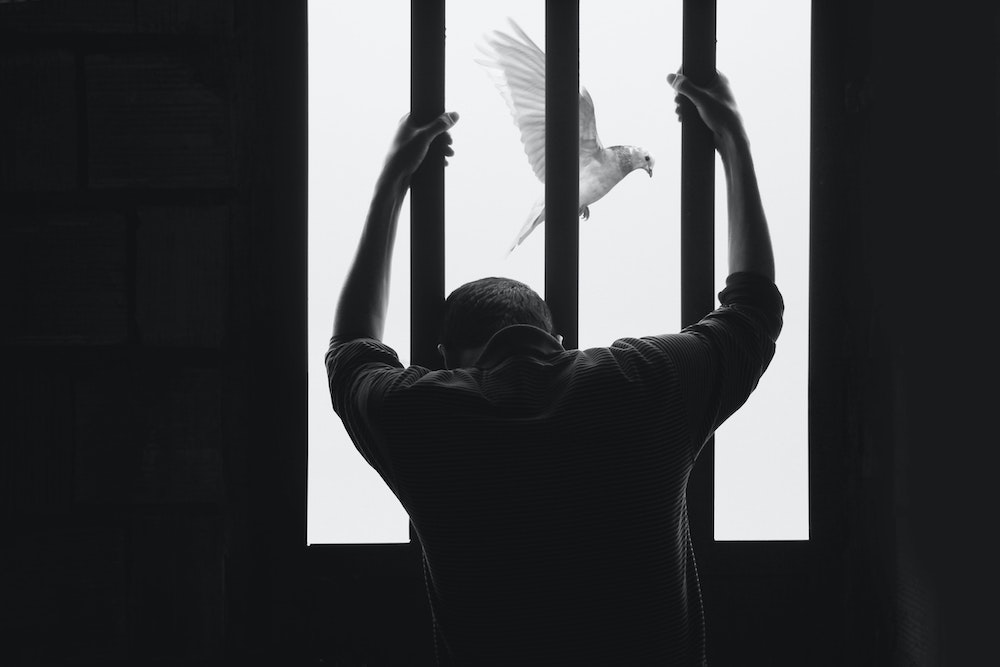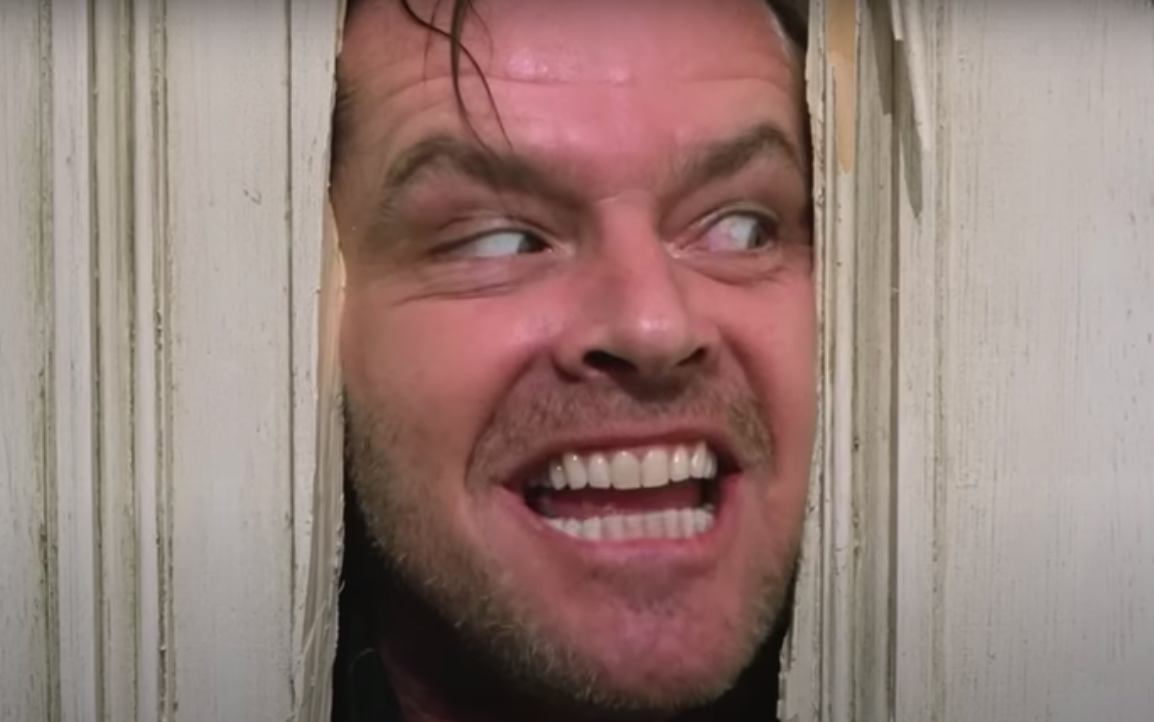Craft
Why Didn’t We Notice the Man Convicted of Alice Sebold’s Rape Was Innocent?
Anthony Broadwater's exoneration shows the unique power publishing holds in shaping how Americans consider race, prison, and sexual assault

In 1982, Alice Sebold, an 18-year-old freshman at Syracuse University, was brutally attacked during an evening walk in Thornden Park. Though Sebold reported the crime to the police, they were unable to identify a suspect until five months later, when Sebold spotted Anthony Broadwater while walking down Marshall Street—not far from the scene of the crime. Sebold recognized him as her attacker and immediately notified the police. Though she was later unable to identify Broadwater in a police lineup, he was taken into custody and charged with eight felony counts, including rape and sodomy. Sebold remained steadfast in her belief that Broadwater was her attacker. “I could not have identified him as the man who raped me unless he was the man who raped me,” she later testified.
After a trial that lasted just two days, Broadwater was sentenced to 8⅓ to 25 years in state prison. Seventeen years later, Alice Sebold published Lucky, a searing account of the attack and its aftermath. The memoir vividly details her experiences working with the police as a victim, testifying in the trial, and struggling with hyper-vigilance, drug and alcohol abuse, as well as PTSD in the years following her rape. Published in 1999, Lucky went on to sell over a million copies and helped to launch Sebold’s successful career as a novelist. The memoir served as an inspiration for many feminists and survivors who seldom saw the ongoing traumas of sexual assault written about in such a raw and unflinching way. To an extent, Lucky also offered a unique sort of comfort to readers. Despite the violence and pain it depicted, it was a heartening example of the criminal legal system working: a victim endured a horrible crime, police arrested a supposedly dangerous suspect, and the guilty party was swiftly convicted and punished—except for one thing: Broadwater wasn’t guilty.
Despite the violence and pain it depicted, it was a heartening example of the criminal legal system working.
In January 2021, almost two decades after the memoir’s publication, a film adaptation of Lucky entered pre-production. One of the film’s executive producers, a disbarred, formerly incarcerated Michigan lawyer named Timothy Muccainte, noticed shocking flaws in the case, flaws that should have been obvious from the beginning. Broadwater’s conviction rested on an all-too-common confluence of discredited forensic science, rampant prosecutorial misconduct, and faulty eyewitness misidentification. The hair comparison testimony used to connect Broadwater to the crime is now widely considered “junk science,” and cross-racial identification, especially five months after the crime, is notoriously unreliable. Plagued by these suspicions, Muccainte left the project and hired a retired detective, Dan Myers, to investigate the case. Myers later connected Broadwater with a team of lawyers who were willing to represent him.
On November 22, 2021, a New York State Supreme Court Justice exonerated Anthony Broadwater, now in his sixties, on the grounds that the case against him had been deeply flawed, making Broadwater just one of 132 wrongfully convicted individuals exonerated in 2021 alone. Broadwater, who maintained his innocence over the years, will no longer be categorized as a sex offender, a status that had severely limited where Broadwater could work, live, and travel in the years after his release from prison in 1998. As a registrant, Broadwater was forced to abide by a strict curfew. He struggled to find stable employment, instead taking temporary jobs doing yard work, bagging potatoes, and scavenging for scrap metal. Because his computer was closely monitored after his release, he felt it easier not to learn how to use it. When the Justice announced the decision, Broadwater released an audible gasp, bursting into tears. The case was covered in major outlets and sparked justified outrage on social media. Broadwater’s story offered a sobering reminder of the ways in which rape accusations have historically been weaponized as a tool of white supremacist violence. Though Broadwater was not murdered like Emmitt Till or the Scottsboro Boys, his wrongful conviction is still a modern product of the same hateful, racist legacy—one that is still alive and well. According to data from the National Registry of Exonerations, a Black man serving time for sexual assault is 3.5 times more likely to be innocent than a white man.
Broadwater’s story offered a sobering reminder of the ways in which rape accusations have historically been weaponized as a tool of white supremacist violence.
Though many understandably criticized Sebold for the clear role of racial bias in her misidentification of Broadwater, the case also brought renewed attention to the ways in which police and prosecutors casually mishandle and manipulate traumatized victims in pursuit of a conviction. As the Black Lives Matter movement and other activists across the country continue to bring much-needed attention to the many failures of policing and prisons in the United States, the saga of Alice Sebold and Anthony Broadwater served as an upsetting example of how the criminal legal system so recklessly and routinely destroys the lives of people of color, often in the name of “justice.”
It also highlighted publishing’s complicity in this broken system. Despite the memoir’s obvious flaws, the white-dominated publishing world found nothing questionable or unsatisfactory about the narrative Sebold presented in Lucky when it was published, nor did the millions of people who read the memoir during the seventeen years it was in circulation. Perhaps this shouldn’t be surprising. The vast majority of people who sell, acquire, edit, and market books are white, and despite a recent upsurge in demand for books like Just Mercy or How to Be an Antiracist, the industry has largely been uninterested in books that tackle racism or criticize our criminal justice system. Lucky, a book by a white woman that consciously or unconsciously panders to white assumptions about Blackness and criminality, was in fact right at home in this environment. It took a curious outsider with his own criminal record and no links to the literary or publishing worlds to spot the problems waiting in plain sight on the memoir’s surface. The story of Alice Sebold and Anthony Broadwater is a case study in how the publishing industry champions white writers and their stories, often at the explicit expense of communities of color.
After the story broke, Sebold issued an apology to Broadwater via Medium. Simon & Schuster announced they would cease distribution of Lucky pending a possible revision. The film adaptation of the memoir was also dropped. The literary world, it seems, is at a crossroads. In the years since the #MeToo movement jump-started a national reckoning, memoirs of sexual assault and harassment have become commonplace. From celebrity memoirs like Brave by Rose McGowan to literary accounts of campus rape like Know My Name by Chanel Miller and Notes on a Silencing by Lacy Crawford, stories of sexual assault, once niche, have found increased visibility and marketability. The news about Lucky and the racist harm its publication perpetrated has further amplified calls for change in the literary and publishing worlds. What do revelations like this mean for the steadily growing body of literature focused on sexual harassment and assault? How can one write about their experiences of sexual violence without contributing to the many harms caused by policing and mass incarceration? What happens when #MeToo and #Defund inevitably collide? And what role can publishing play in ensuring that what happened to Anthony Broadwater never happens again?
What role can publishing play in ensuring that what happened to Anthony Broadwater never happens again?
Simply considering these complex questions may be a radical act, albeit an uncomfortable and challenging one. It requires one to question the long-held societal assumption that policing, prosecutors, and prisons are the solutions to our every social ill, and to begin to imagine a future where we respond to serious harm in ways that do not further perpetuate it.
Throughout the late 1960s and 1970s, radical feminists were doing exactly that. During this time, many second-wave feminists, particularly Black feminists and other feminists of color, sought intersectional solutions to gender-based violence that did not exclusively rely on the exisiting structures provided by the state. Rather than turning to the police and courts, they advocated for grassroots rape crisis centers, domestic violence shelters, abortion networks, and other community-based support organizations. In 1974, the New York Radical Feminists published Rape: The First Sourcebook for Women, which firmly stated, “We do not want to make rape laws more punitive.” Rather, it called for a total “transformation of the family, of the economic system, and of the psychology of men and women” in order to create a world where domestic and sexual violence was “unimaginable.” Groups like the Combahee River Collective demanded a complete revolution of the “interlocking” political and economic systems that simultaneously bolstered racism, poverty, and sexual violence, writing in 1977: “We struggle together with Black men against racism, while we also struggle with Black men about sexism.” The Combahee River Collective acknowledged that the social problems driving gender-based violence would not be remedied by simply punishing so-called bad men.
These radical ideas were quickly sidelined by mainstream white feminism, which focused instead on opening up spaces for women in the workplace and pushing for harsher criminal penalties for gender-based violence. The movement both influenced and was influenced by the tough-on-crime, law-and-order politics of the 1970s and 80s. By 1981, when Lucky was published, mainstream feminism had begun adopting what Aya Gruber in The Feminist War on Crime: The Unexpected Role of Women’s Liberation in Mass Incarceration calls the “propolicing, proprosecution” stance that helped to drive our current mass incarceration crisis. Though Sebold’s story was a bit of an anomaly–only about 25% of sexual assaults are reported to the police and the rape kit backlog remains a major obstacle to proper investigation and prosecution–it perfectly embodied what sociologist Elizabeth Bernstein describes as “carceral feminism,” the belief that increased policing and harsher prison sentences will help achieve feminist goals. Ultimately, the police and the courts sold the traumatized Sebold on a promise of justice—a promise that proved false.
Though we might like to think the majority of people in our prisons are like the dangerous stranger who beat and raped Alice Sebold in a park in 1981, the truth is more complicated than that. The system ensnares women and survivors of sexual violence and abuse. It ensnares the poor, the marginalized, and the mentally ill. It ensnares parents and children. It ensnares the guilty and the innocent alike. As Amia Srinivasan writes in The Right to Sex: Feminism in the 21st Century, “Once you have started up the carceral machine, you cannot pick and choose whom it will mow down.”
Writers like Ashley C. Ford, Jeannie Vannasco, and Lacy M. Johnson are now breaking with the pro-carceral Alice Sebold mold by considering the system’s failures and seeking new solutions. These writers explore the pain and trauma they endured while also troubling the knee-jerk assumption that punitiveness is always the best answer to violence. Writing about sexual assault is a brave and vital feminist act. However, if writing about sexual assault is to be truly transformative and reparative, it should engage with these complex tensions and explore solutions that heal rather than propagate harm.
If writing about sexual assault is to be truly transformative and reparative, it should … explore solutions that heal rather than propagate harm.
In her memoir Somebody’s Daughter, Ashley C. Ford describes her experience growing up in Fort Wayne, Indiana with a father serving a 30-year prison sentence. Ford is just one of more than five million children in the United States with a parent who is or has been incarcerated. Ford’s father was sent to prison when she was too young to know or understand the crime he committed. Likewise, Ford withholds telling readers her father’s crime until several chapters into the book. Instead, readers first see the way the young Ford loved, idealized, and missed her incarcerated father. She writes of praying for her father and trying to turn him “into a memory” she could hold onto forever. She clings to a picture taken of her family before her father went away and describes her recurring dream that her family would one day “dance out of the prison doors together” and become whole again. Ford brilliantly conjures a child’s aching mixture of confusion and longing for an absent parent. This pain is compounded by Ford’s complex and often volatile relationship with her single working mother, a woman exhausted and overwhelmed by the struggle to raise a family without the support of a partner. Incarceration, Ford shows, does not just impact the individual forced to live behind bars for months, years, or decades.
Ford’s moving and heartfelt image of her father is complicated when both Ford and readers learn that her father was incarcerated for raping two women, a revelation that is further complicated by the fact that Ford is also a survivor of sexual assault and emotional abuse. In Somebody’s Daughter, Ford navigates the intricate landscape of both having survived sexual violence and knowing firsthand the cascading toll incarceration takes on families. She steadfastly details the way it destabilizes, stigmatizes, and creates lifelong feelings of confusion, pain, and shame. In writing about her complicated relationship with her father, Ford’s memoir complicates the narrative around perpetrators of sexual assault. She reminds us that those often dismissed as criminals or even monsters are also parents, partners, children, siblings, and friends. Ford does not absolve her father of his guilt. Instead she shows how love and accountability, forgiveness and consequences, pain and joy can coexist.
Jeannie Vanasco completes a similar project in her innovative memoir Things We Didn’t Talk About When I Was a Girl. She interweaves a vivid account of her sexual assault and its impact on her life with transcripts from an interview she later conducted with her rapist, whom she calls “Mark.” Mark and Vanasco were close friends when Mark sexually assaulted her at a party. Vanasco’s story is far more common than Sebold’s: 74.5% of rapes are committed by someone the victim knows: family members, current or ex-partners, and friends. Though Mark and Vanasco’s friendship quickly dissolved in the wake of the assault, Vanasco was left with many painful and unresolved feelings about its significance to both their lives, an open wound she hoped to heal years later by interviewing Mark over the phone.
Things We Didn’t Talk About When I Was a Girl breaks with many previous memoirs of sexual assault by actively involving the perpetrator in the narrative-making.
In Things We Didn’t Talk About When I Was a Girl, Vanasco brilliantly captures the many complex and often contradictory emotions she wrestled with after the assault and in the days leading up to her interviews with Mark. Vanasco admits to her husband, “I want to hate [Mark] but I can’t.” Her memoir breaks with many previous memoirs of sexual assault by actively involving Mark in the narrative-making, incorporating his voice and his thoughts alongside Vanasco’s own. Mark becomes an active participant, almost a collaborator, in Vanasco’s text. In interviews after the book’s publication, Vanasco expressed concern that feminists would see her decision to directly include Mark’s voice in the project as anti-feminist. However, this decision—usually considered solely on the basis of craft—should also be viewed as an act of restorative justice, a space in which both parties meet and work towards healing without automatically turning to the criminal legal system.
The resolution of Vanasco’s project, however, remains profoundly imperfect. Vanasco admits that her nightmares about Mark continued after the interviews concluded. “So much for resolution,” she writes. Coming at the very end of her memoir, this admission is a bit of a shock. It upsets and complicates what many readers want and expect from this sort of narrative—a clean arc from trauma and pain to healing and happiness. Even years after her rape, Vanasco’s journey towards healing remains open-ended and incomplete. There is no closure or triumph. Though readers might find this ending unusual or even unsatisfying, it mirrors the experience of many survivors. Healing after trauma is a complicated, life-long process with no clear end point or solution.
Writer and professor Lacy M. Johnson explores life after sexual trauma in her 2018 essay collection The Reckonings. Johnson was twenty-one when her ex-boyfriend kidnapped, raped, and attempted to kill her before fleeing to South America. In her 2014 memoir The Other Side, Johnson grippingly recounts their abusive relationship, the kidnapping, and the decades-long mental and physical suffering she experienced as a result. In her follow-up book, The Reckonings, Johnson unpacks the common reaction many people had to The Other Side. Much to Johnson’s surprise, readers assumed Johnson would want her rapist dead. Some even offered to kill him for her, viewing their offer of violence as an act of feminine solidarity. When Johnson tells such readers that she does not in fact want her ex-boyfriend to die, or even to suffer, they are often “confused.” Johnson writes, “It is not the ending to the story anyone expects—not even the one they want, because they want a return, a redemption, a retrieval of all I had lost for my part in the story; they want suffering for him. They want blood, guts, gore.”
Healing after trauma is a complicated, life-long process with no clear end point or solution.
Revenge narratives are everywhere in American culture and Johnson dissects these stories with brilliant precision, tracing their evolution from the Old Testament to Quentin Tarantino to Game of Thrones. She writes, “There is a story we have each heard from birth that when someone does something bad, something bad should happen to that person in return and that this turnabout is justice.” Johnson then references the lex talionis, or the law of retaliation, which states, “If a man has put out the eye of a free man, put out his eye.” However, the lex talionis, as Johnson explains, was not a mandate, but rather a notion “meant to put a limit on vengeful action, to curb what humans understood to be our baser instincts.” If a man steals his neighbor’s cow, that neighbor should not respond by killing that neighbor’s family. It was designed to encourage proportionality and mercy, not bloodthirst.
Rather than revenge, Johnson wants what she calls “a reckoning.” She questions the commonly held belief that punishment equals justice. Is revenge inherently satisfying, cathartic, or healing? Not for Johnson. She doubts that seeing her ex-boyfriend suffering in prison would put an end to her nightmares, her panic attacks, and her need for medically prescribed and self-prescribed treatment. She writes, “More pain creates more sorrow, sometimes generations of sorrow, and it amplifies injustice rather than cancels it out.” Now, when asked what she wants to happen to her ex-boyfriend and rapist, Johnson answers, “I want him to admit all the things he did, to my face, in public, and then to spend the rest of his life in service of other people’s joy.”
Not all survivors will feel the same way as Johnson. The meaning of accountability is both vast and specific. While some may believe no one deserves to be harshly punished for their wrongdoing, others may believe that punishment in some cases is necessary or deserved. Some may think a lengthy sentence is appropriate for someone like Ashley C. Ford’s father who raped two women, or decide they do not need to hear the thoughts and feelings of men like Mark from Things We Didn’t Talk About When I Was a Girl. As Srinivasan writes in The Right to Sex, “Feminists need not be saints … but [they] must ask what it is they set in motion, and against whom, when they demand more policing and more prisons.”
Not all survivors will feel the same way as Johnson. The meaning of accountability is both vast and specific.
Much has changed since Alice Sebold published Lucky at the tail-end of the 90s. The need to confront all forms of sexual violence is well known, and more people are writing about and publishing their experiences than ever before. At the same time, the United States has reached an inflection point about the outsized role of policing and prisons nationwide. Though these two things may seem at odds, they need not be.
Now is the time to start imagining a future free not just from sexual violence but from the racist violence of our broken criminal legal system. Writers and publishers are uniquely equipped to do this important work. Writers and publishers must acknowledge the unique power they have to shape how Americans think about race, crime, and prison, a power that has often bolstered rather than questioned the pro-carceral status quo. Through storytelling, writers can complicate existing narratives and build better ones. They can transform both individual and societal suffering into a thing of beauty and meaning, and they can tell powerful and nuanced stories that help us to reframe our understanding of “justice” and what it looks like in today’s world.
Publishers must also be willing to select these kinds of narratives for publication, and support them with the marketing and promotional practices that will help them to reach a wider audience. Halting the publication and distribution of problematic books, as Simon & Schuster did with Lucky, is not enough. The industry must actively confront its long-held, unquestioned focus on white writers telling white stories edited by white editors for white audiences. Hiring more people of color, publishing writers from marginalized communities, and implementing more robust review practices for books that directly or indirectly involve policing and prisons is a strong place to start. When planning to publish a major book like Lucky, publishers can hire sensitivity readers from impacted communities to bring their insight and experiences to the work. Perhaps restorative justice experts or legal activists should also be brought into the acquisitions and fact-checking processes to ensure that glaring errors or misrepresentations like the ones in Lucky are not shrugged off or ignored. The most obvious solution is to publish the work of incarcerated and formerly incarcerated writers—important voices that, like those of survivors, have been silenced for far too long.
The industry must actively confront its long-held, unquestioned focus on white writers telling white stories edited by white editors for white audiences.
Publishing cannot do the work of the criminal legal system, but it can act as a critical check on its tremendous power. Through diversifying their staff and authors and changing the way stories about crime are acquired and published, the industry can begin to combat the historical exclusions, biases, and blind spots that allowed a flawed book like Lucky to be published in the first place, and that helped the suffering of a man like Anthony Broadwater to go completely unchecked for close to twenty years.
In the months since his exoneration, Broadwater has received an outpouring of support from people across the country, including over $160,000 from a GoFundMe Campaign aiming to raise money for his housing and legal fees. Broadwater is currently seeking financial compensation from New York state for his wrongful conviction, and he hopes to one day have enough money to buy a farmhouse in the country with his wife, Elizabeth. Toward Sebold, he remains forgiving and empathetic, telling the New York Times, “She went through an ordeal, and I went through one too.” With time, Broadwater has set up his own email account and is slowly learning how to use a computer and navigate the internet. Timothy Mucciante, the lawyer and producer who helped bring attention to the story, is interested in partnering with Broadwater to make a documentary film about his life. Soon, Broadwater may get the chance to share his own story with the world.








